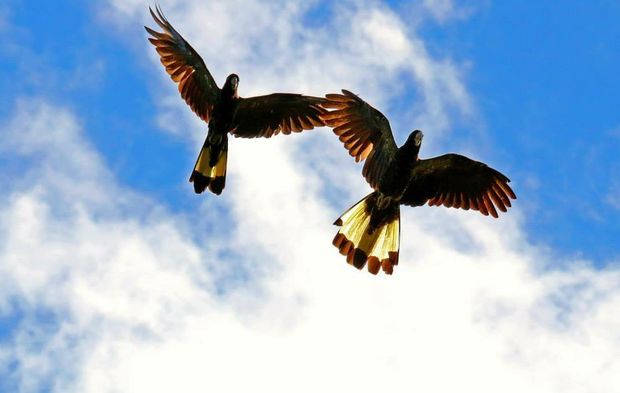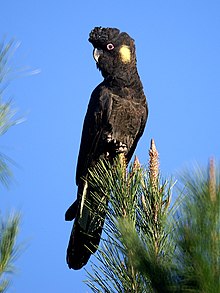Anywho, I felt like continuing a topic from the last post. The yellow-tailed black cockatoo (Calyptorhynchus funereus), native to southeast Australia, is today's topic. I saw a pair when my dad, sister, and I were exploring Wentworth Falls in the Blue Mountains. I happened to look up and saw them flying overhead.
How did I know what they were despite having never been to Australia? I bought a bird book, a nice hefty one that has all the bird species identified in Australia and Tasmania. When I saw the birds, my first thought was "Macaws!" because they looked like small macaws. Immediately after that thought came, I remembered that macaws are only found in Central and South America. I then dug into my trusty Australian bird guide, and, by using the range maps and distribution notes, I pegged them as yellow-tailed black cockatoos.
Thankfully, they're listed as a species of least concern. However, like all parrots, they are always faced with deforestation. Cockatoos feed on grubs, seeds, and the occasional fruit. Like their cousins, the sulfur-crested cockatoo, they are beautiful, noisy, and dramatic. As all parrots are.
(https://www.frasercoastchronicle.com.au/news/whiporie-cockatoos-captured-flight/2416873/#/0)
(https://en.wikipedia.org/wiki/Yellow-tailed_black_cockatoo)


No comments:
Post a Comment